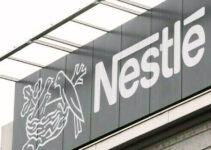Let’s say you buy something online and you regret your decision of online shopping while seeing the better product at the local retail store. It has become possible to return your product due to the reverse logistical process and mechanism. Today, we’ll discuss e-commerce reverse logistics; its definition, various types, process, and benefits.
What is E-commerce Reverse Logistics?
E-commerce reverse logistics is the method when customers return their procured goods to the online store. Customers start the process of return by making sure that the suppliers receive the used product, tracking goods delivered to the storage facility, and evaluating the return shipment back to the production facility.
However, it comprises of flow of goods from the point of consumption to the point of origin for two main reasons; recapturing and discarding value. It is a complex and complicated process if the company doesn’t manage it with care. Various online stores and e-commerce platforms would coordinate with 3PL (3rd party logistics) service providers to manage their reverse logistical process. The objective is to make the return process convenient for the businesses and the customers.
Process of E-commerce RL
Some of the main steps involved in the e-commerce reverse logistics process are as follows;
Retrieving
The retrieval process begins with the end consumers when they return their products and the company receives it from them. Companies need to make a lot of choices by allowing their customers to return for exchange and repair. You can hire local shippers to establish drop-off points for companies, or their shipment would pick up the damaged or returned products.
Repairing & Refurbishing
It comprises repairing, restoring, and getting them ready for resale after vendors have received them. The company would perform the inventory planning depending on the type of products. The repairing stage is different for different businesses and companies.
Screening
The company thoroughly inspects and tests the repaired products before sending them back to the inventory. It is the key element of the reverse logistical process because shipping goods that don’t satisfy the demands of customers, and they have a great impact on customer loyalty and happiness. A wrong product would negatively impact the reputation of the company.
Reselling
It is the final stage where you dispose of or resell the screen and repair products again to the customers.
Types of E-commerce RL
Some of the main types of e-commerce reverse logistics are as follows;
Return Management
The return management focuses on the return of customers. Actions the company would take would be simple, visible, transparent, and easily manageable. Customer view and perceive the company based on its return flow and return policy. Re-return is when customers return the product the 2nd time. However, the return policy comprises issuing store credit for the frequent re-return.
RPP
RPP (return policy and procedure) is the return policy of the company published on its platform. The terms and conditions outlined in the policy are easy to find; employees and customers have to follow them.
Repairing
Repairing, refurbishment, and remanufacturing are the forms of the reverse logistical process. It comprises activities like reworking, rebuilding, and repairing. However, it helps companies to find replaceable and usable parts from other products, and the process goes by the name of cannibalization. Reconditioning comprises reassembling, cleaning, and dismantling.
Packaging Management
Reusing the same package over and over again decreases the company’s waste. It is a great strategy for managing waste.
End-of-Life
When the product is not functional and usable, then it reaches the end of its lifecycle. It is possible that the product won’t satisfy the demands of customers and requirements. However, it requires companies to renew and replace their product with the superior version.
Delivery Failure
As the name implies, if the product doesn’t reach the required destination, the delivery service provider will return it to the manufacturer. It is not common for the company should figure out the problem and resend it to the customers.
Benefits of E-commerce RL
Some of the main benefits of e-commerce reverse logistics are as follows;
Visibility & Transparency
When all the forward and backward route of the product flow is visible and transparent, then inventory management becomes very simple and easy. Resultantly, it allows you to plan and operate efficiently and effectively.
Operational Velocity
Quick return means speedy operational processes. If the returned product quickly goes to inventory and warehouse, then it amplifies the speed of the transaction cycle. However, it provides a positive impression of the company to the customers.
Low Cost
If the return process, shipment, and operations work flawlessly and speedily, then it decreases the expenses and costs of the company. The company would become more productive and profitable over time.
Customer Retention
If the return process is long and inefficient, then it makes customers wait long hours and fail to return. As a result, customers would hesitate to buy from you next time, and it decreases the customer retention ratio. A quick and efficient return process amplifies the customer retention ratio.
Conclusion: E-commerce Reverse Logistics
After an in-depth study of e-commerce reverse logistics; we have realized that reverse logistical process is a growing concern for online shoppers. If you are learning about the reverse logistical process in e-commerce, then you should keep in mind the abovementioned elements, types, and benefits.
Ahsan is an accomplished researcher and has a deep insight in worldly life affairs. He goes Live 3 days a week on various social media platforms. Other than research writing, he’s a very interesting person.


